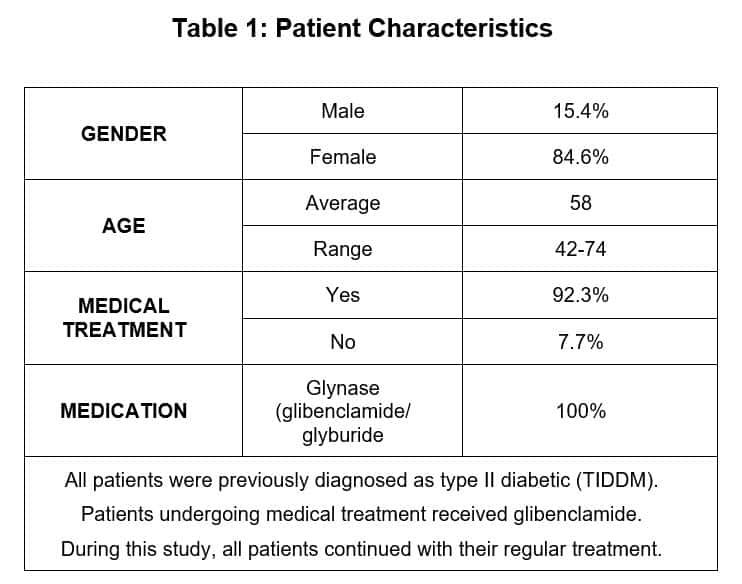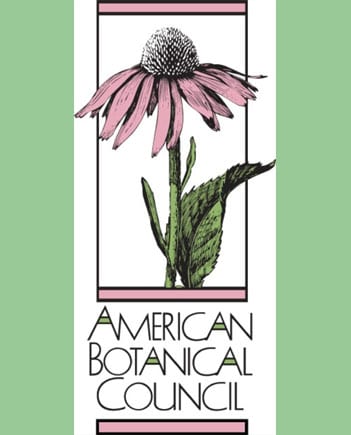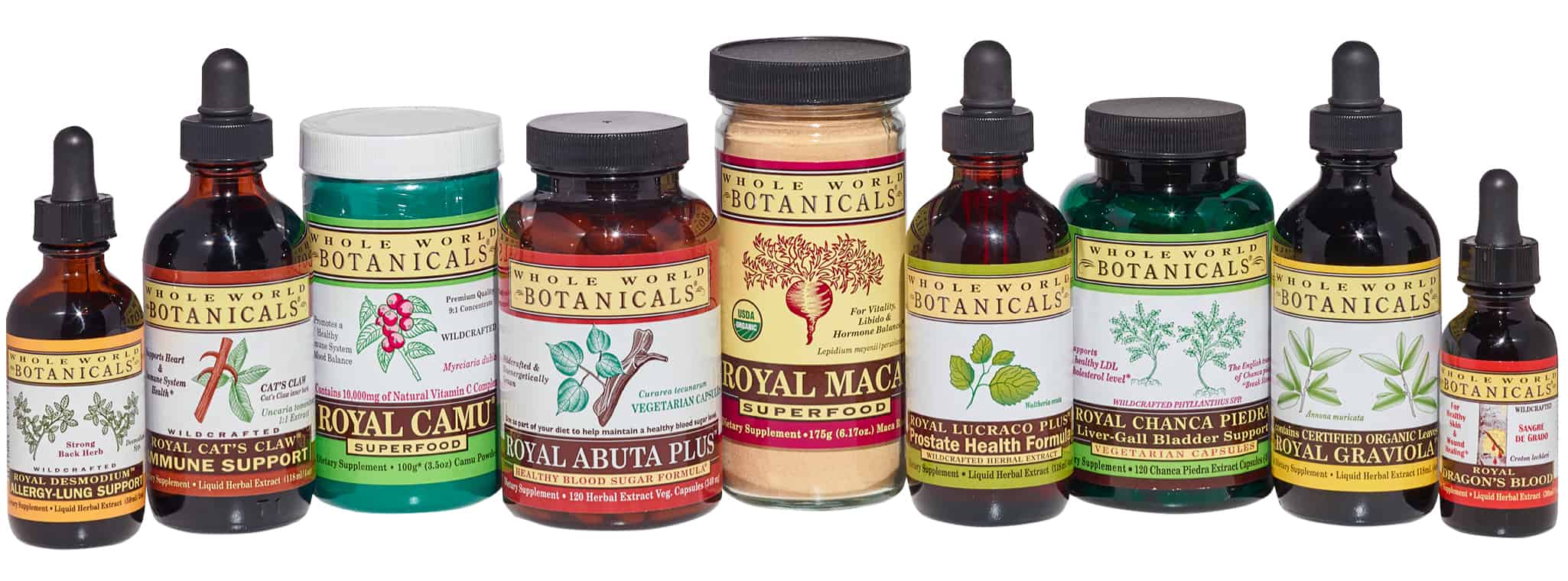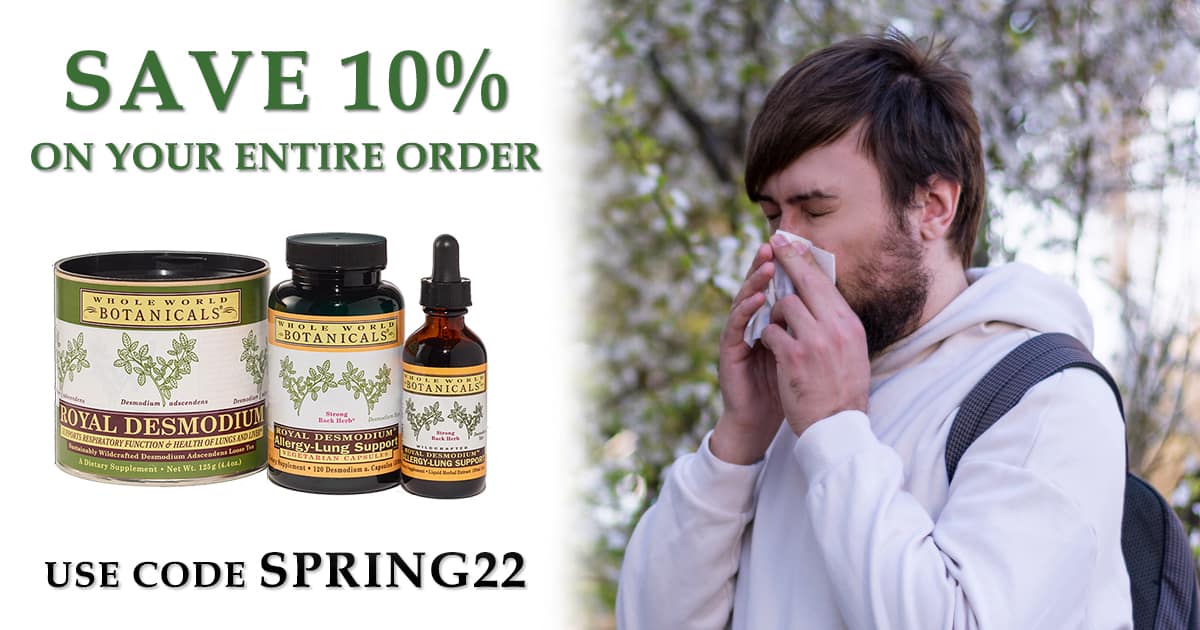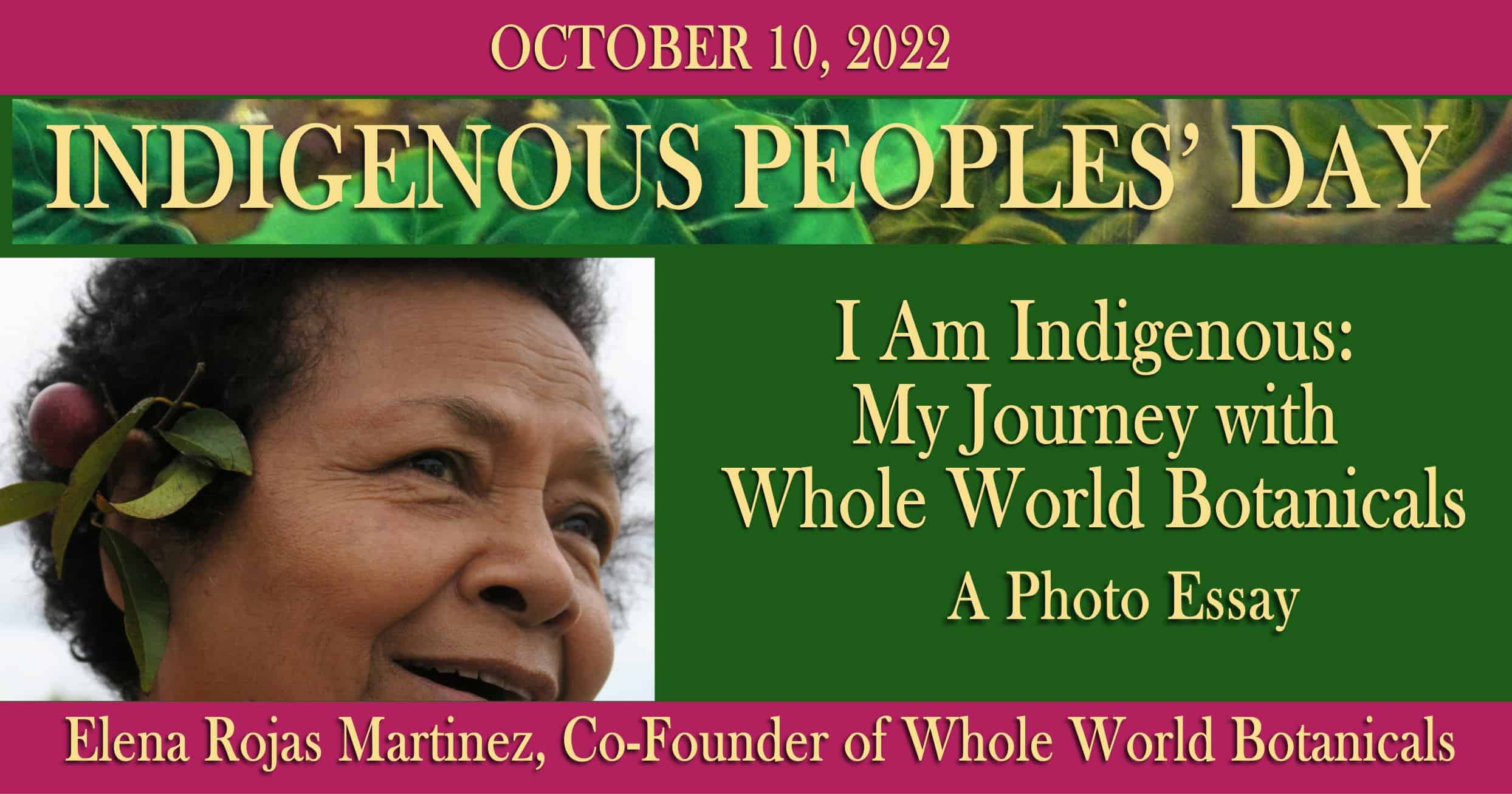
Evaluation of the hypoglycemic activity of Curarea tecunarum Bameby & Krukoff “Abuta”
Artemio Chang, Silvia Klinar, Hugo Malaspina, Berta Ramos and Viana Muller
Laboratory of Natural Products of the Pharmacy and Biochemistry Faculty at the National University of San Luis Gonzaga. Ica – Peru
National Institute of Traditional Medicine (Ministry of Health) – ICA Branch – Peru
Abstract
We demonstrate the hypoglycemic activity of Curarea tecunarum Bameby & Krukoff “abuta,” as used by the natives of the Peruvian Amazon. Twenty patients diagnosed with non-insulin-dependent diabetes mellitus (NIDDM-Type II) receiving glibenclamide (glyburide) as their usual treatment were selected and underwent a 60-day evaluation with no modification of their treatment and dietary habits. The trial was double-blind; 14 patients received two 300 mg capsules of C. tecunarum extract daily; 6 patients received a placebo (one of them dropped out of the study, as no positive results were obtained). At the end of treatment, patients receiving C. tecunarum extract had a 48% decrease in plasma glucose levels; patients receiving the placebo showed no change in levels.
Introduction
In the Peruvian Amazon, indigenous people use a wide variety of plant species to alleviate illnesses,– including the “abuta” Curarea tecunarum Bameby & Krukoff – to combat malaria, and diabetes, fungi, and other skin conditions. They also use the crushed stem as a contraceptive.
In this study, the hypoglycemic activity of “abuta” was validated in 19 patients diagnosed with non-insulin-dependent Diabetes Mellitus (Type II). 14 received treatment and 5 received a placebo over 60 days. During the evaluation, the patients continued their regular eating habits and medical treatment. The double-blind method was used.
We believe that our study is important, taking into account that Diabetes Mellitus is one of the main causes of mortality in the world and that its chronic complications have an important economic impact, with figures reaching billions of dollars.
Prevalence rates of this disease range from 1.3/1000 among people under 17 years of age to 78.5/1000 among those 65 years of age or older, being 50% more common in females.
Experimental Procedure
This was a double-blind, 60-day study in patients diagnosed with type II Diabetes Mellitus to determine the hypoglycemic activity of abuta.
19 diabetic patients were separated into two groups. The first group, consisting of 14 patients, was administered 2 capsules daily of 300 mg of abuta extract (2:1) for 60 days, and the second group of 5 patients was administered placebo in the same dose for 60 days. Plasma glucose levels were measured at 7, 15, 30, 45, and 60 days. Patients were interviewed to determine the occurrence of factors that increase glucose levels, such as emotional stressors and social commitments that involve excesses in their regular diet.
During the study, the patients did not modify their habits (dietary, sports, social, etc.), nor did they abandon or modify their regular antidiabetic treatment.
A 2:1 dry extract of “abuta” Curarea tecunarum Bameby & Krukoff was obtained, and capsules of 300 mg each were prepared.
Results
Patients treated with the Curarea tecunarum Bameby & Krukoff (2:1) extract showed a significant and gradual decrease in plasma glucose levels. At the end of treatment, plasma glucose levels were reduced by 48% (Figures 1 and 3). Figure 2 shows that the patients treated with the placebo did not experience significant change in their blood glucose levels.


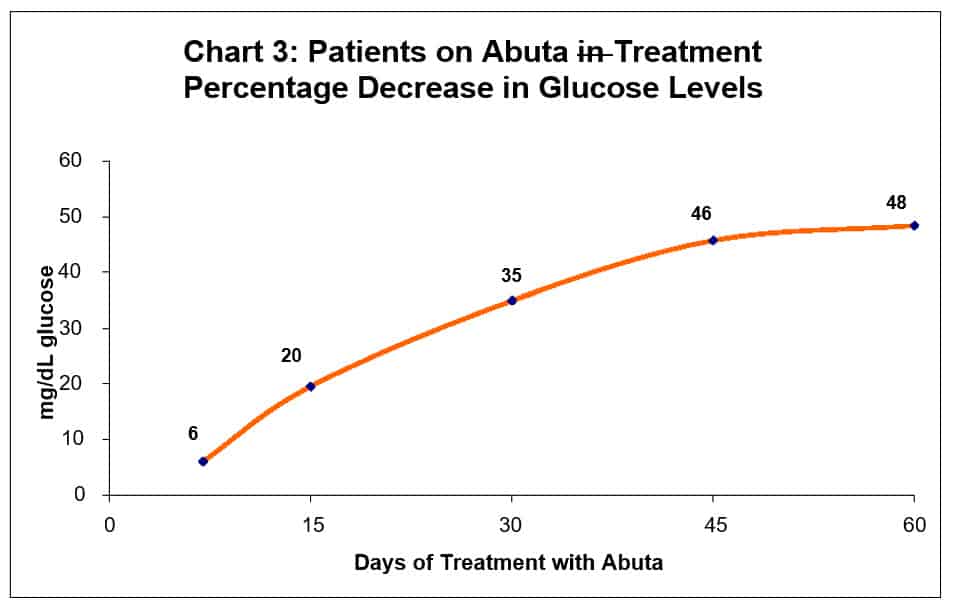
Glucose tolerance tests were performed at baseline and at the end of the study, both in patients who received abuta treatment and patients who received the placebo. No significant change was observed in any case.
Chart 4 shows that 63.15% of patients have normal cholesterol levels and 36.85% have elevated cholesterol levels. Triglyceride levels are normal in 52.63% of patients and elevated in 47.37%. Patients presented HDL and LDL levels in 68.42% and 42.1%; and elevated in 31.58% and 57.9%, respectively.
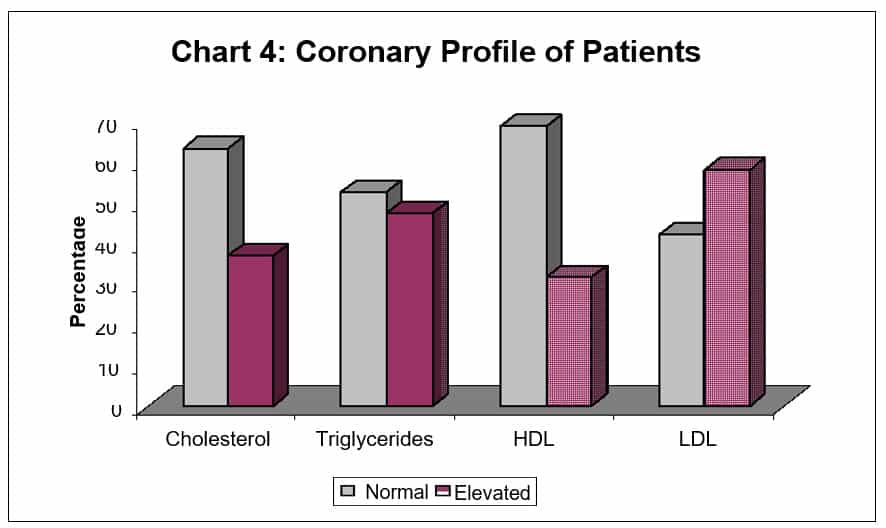
Table 2 corresponds to the interview conducted with patients at the end of the study. It was observed that during the period of treatment with abuta or placebo, 46.2% of the patients suffered emotional disturbances that could contribute to hyperglycemia. Likewise, 53.8% of patients participated in a social commitment that involved non-compliance with their regular diet.
Conclusions
- The Curarea tecunarum Bameby & Krukoff abuta extract, when administered to patients diagnosed as type II diabetics (IDDM) with an average age of 58 years, who continued with their usual habits and treatment of the last three months, showed a remarkable hypoglycemic effect by reducing plasma glucose levels by 48% after 60 days of administration. The placebo group showed no decrease in glucose levels.
- The hypoglycemic effect of Curarea tecunarum Bameby & Krukoff extract occurred even when approximately half of the patients presented emotional disturbances and/or attended social engagements that altered their regular diet.
- Curarea tecunarum Bameby & Krukoff extract showed no significant change in glucose tolerance tests.
Bibliographical References
Boletín Terapéutico [Therapeutic Newsletter]. (1993) IPSS. Year 2. No. 17
Jaroslav Soukoup (1970) Vocabulario de los nombres vulgares de la Flora Peruan [Vocabulary of the Common Names of Peruvian Flora.] Colegio Salesianos. Lima, Peru
José Mostacero L. and Freddy Mejía (1993) Taxonomía de Fanerogamas Peruanas. [Taxonomy of Peruvian Phanerogams.] CONCYTEC. Lima, Peru
Williams Cardenas et al (1987) Tratamiento vernacular del paludismo con la abuta. [Vernacular treatment of malaria with abuta.] XV Congreso Peruano de Química. [XV Peruvian Congress of Chemistry.]
Judith Milla and Oscar Velasquez (1991) Evaluación psicológica del diabético. [Psychological evaluation of the diabetic.] III Congreso Internacional de Medicina Integral. [III International Congress of Comprehensive Medicine.]
Lida Obregón (2000) Fitoterapia con [Phytotherapy with] Allium sativum L. “garlic”. Comprobaciones Clínicas. [Clinical Verification.] I Congreso Internacional Fito 2000 [Fito 2000 International Congress].
Note: This article is an English translation of the original research,
Original citation: Chang, A., Klinar, S., Malaspina, H., Ramos, B., Muller, V. “Evaluación de la actividad hipoglicemiante de Curarea tecunarum Bameby & Krukoff ‘Abuta.'” Fitoica: Revista Científica del Laboratorio de Productos Naturales. Año 2 . Num. Especial – 2007.
https://wholeworldbotanicals.com/wp-content/uploads/2022/11/Fitoica-2007-Curarea-Tecunarum.pdf



